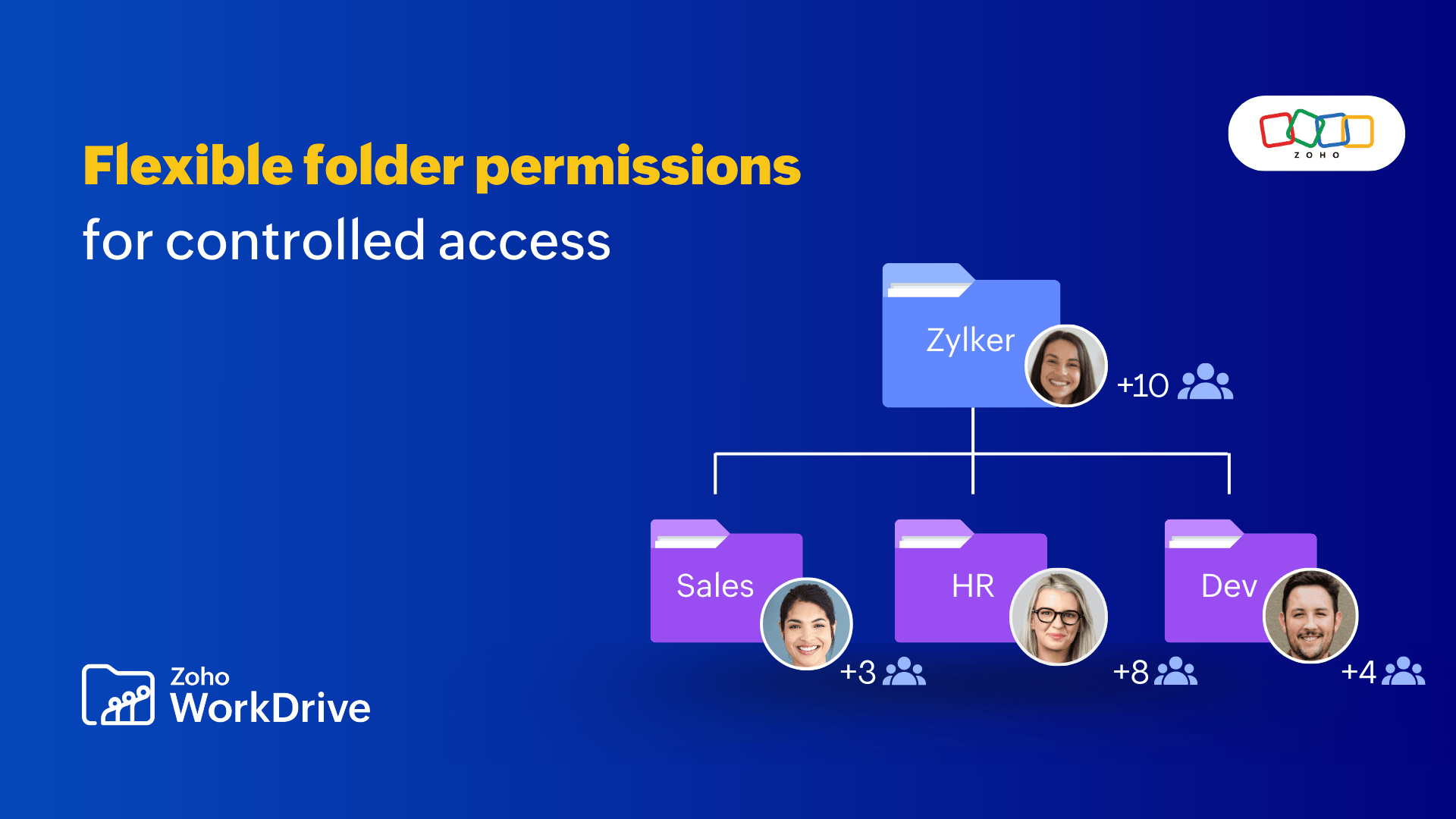New WorkDrive features to help you find order in chaos
- Last Updated : December 13, 2023
- 650 Views
- 3 Min Read

In today’s business world, competition has intensified. To stay ahead of the race, companies must embrace a data-driven culture. According to research by The Economist Intelligence Unit, organizations that rate themselves substantially ahead of their peers in their use of data are three times more likely to rate themselves as substantially ahead in financial performance as well.
However, drawing insights from your data can be challenging when you have teams creating unstructured data with disorganized storage. This is why we’ve introduced new features in WorkDrive to help you build a structured data library to give you and your team access to the information you need instantly.
Prevent clutter with WorkDrive’s Data Templates
The first step to implementing a data strategy is to create an organized data repository for your company. WorkDrive’s Data Templates make it easy to classify your documents and structure them in a more accessible way.
Create custom templates
Build Data Templates and add custom fields based on how you want to classify your documents. Every time your team associates a template to files, they will have to add values based on the fields create within the template. These values will then act as metadata for your files, making them easily searchable and accessible.
For example, let’s say you need to organize resumes from new applicants to your company. Simply create a template based on the recruitment requirements and add custom fields like designation, experience level, whether the applicant has attended an interview already, and more. This way you can classify each resume to make it simple for your team to spot the talent needed for a specific position.

Accelerate your data discovery
With the structure added to your files, you can now search, filter, and track information without much trouble. You can search for documents based on their associated templates and narrow your search further by filtering using custom fields.
For example, you can search for certain resumes using the Data Template search filter and select the custom fields relevant to a new job opening. You can identify the right talent to fit the job, see whether they have already attended an interview, and refer to the feedback tagged along with the file. This way, you are not spending too much time and effort to identify potential new hires.
Search for anything and everything
Even with a structured document library, there are times when we find ourselves lost among the huge pile of files and folders, especially when you are looking for a particular piece of information.
Not to worry: we have WorkDrive’s universal search for just this situation. You can easily locate any file in your WorkDrive, even if they aren’t intuitively named. WorkDrive not just searches for the document name, but it also scans through the content of every file stored within WorkDrive so you can simply use a keyword within documents to locate them.
WorkDrive now supports Optical Character Recognition and Object Detection. meaning you can easily find your images and scanned docs by simply searching with a keyword.

OCR extracts the text within images, scanned documents, and images inside documents, converting them into searchable metadata. Our Object Detection feature scans images for objects related to your search keyword. Currently, WorkDrive supports 50 plus objects and we are continuously adding more.

Back in the day, data was perceived as the by-product of business activity or a process. However, in today’s digital world, data is an invaluable asset. Tracking and leveraging your data will help sustain your organization and increase productivity in the long run.
Take control of your information: unlock the true potential of your organization’s data with Zoho WorkDrive.
For feedback and queries, please write to us at support@zohoworkdrive.com You can also follow us on Twitter and Facebook for interesting news and product updates on WorkDrive.



